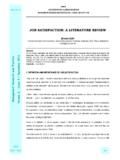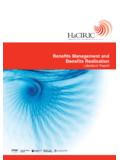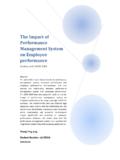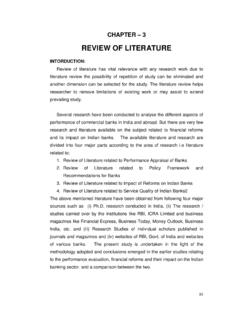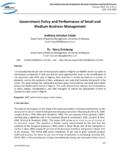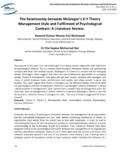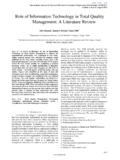Transcription of UNDERSTANDING OF SUPPLY CHAIN: A …
1 Rajendra Kumar Shukla et al. / International Journal of Engineering Science and Technology (IJEST). UNDERSTANDING OF SUPPLY chain : a literature review . Rajendra Kumar Shukla**. Assistant Professor JSS Academy of Technical Education, Noida-201301, Uttar Pradesh, India Dr. Dixit Garg Professor in Department of Mechanical Engineering, National Institute of Technology, Kuruksetra, Harayana-136119, India Dr. Ashish Agarwal Associate Professor in the School of Engineering and Technology, Indira Gandhi National Open University, New Delhi, India. Abstract: SUPPLY chain Management is a network of facilities that produce raw materials, transform them into intermediate goods and then final products, and deliver the products to customers through a distribution system. The management of the SUPPLY chain and the roles of various actors involved differ from industry to industry and company to company.
2 As a result SUPPLY chain Management (SCM) has become a vital issue for manufacturers, professionals and researchers. It is felt that to manage the SUPPLY chain effectively entire structure of SUPPLY chain must be understood properly. This paper attempts to provide the reader a complete picture of SUPPLY chain management through a systematic literature review . It presents main activities of SUPPLY chain and the step-by-step approach for UNDERSTANDING a complete picture of SUPPLY chain . Key Words: SUPPLY chain , SUPPLY chain activities, SUPPLY chain management, Implementation strategy, performance measurement. 1. Introduction: Organizations adopt numerous business improvement methodologies to improve the business performance. Manufacturers and researchers have noted a number of problems regarding SUPPLY chain activities in their research and practice (Sridharan et al.)
3 , 2005). It is observed that usually either a system (Integrated approach) or a subcomponent in SUPPLY chain (Disintegrated approach) is focused and discussed in the literature but fails to answer the rational (why, what, how) behind SUPPLY chain activities ( Spens & Bask, 2002). This paper addresses these questions with the help of structured literature review , which not only helps to understand the management of SUPPLY chain but also provide the a six step approach to manage the SUPPLY chain . 2. review of literature : SUPPLY chain Management is a network of facilities that produce raw materials, transform them into intermediate goods and then final products, and deliver the products to customers through a distribution system. It spans procurement, manufacturing and distribution (Lee & Billington 1995) the basic objective of SUPPLY chain management is to optimize performance of the chain to add as much value as possible for the least cost possible.
4 In other words, it aims to link all the SUPPLY chain agents to jointly cooperate within the firm as a way to maximize productivity in the SUPPLY chain and deliver the most benefits to all related parties (Finch 2006). Adoption of SUPPLY chain management practices in industries has steadily increased since the 1980s. A number of definitions are proposed and the concept is discussed from many perspectives. However Cousins et al. (2006); Sachan and Datta (2005); Storey et al. (2006) provided excellent review on SUPPLY chain management literature . These papers define the concept, principals, nature, and development of SCM and indicate that there is an intense research being conducted around the world in this field they critically assessed developments in the theory and practice of SUPPLY management.
5 ISSN : 0975-5462 Vol. 3 No. 3 March 2011 2059. Rajendra Kumar Shukla et al. / International Journal of Engineering Science and Technology (IJEST). Gunasekaran and McGaughey (2003) extended the scope of SCM beyond material management, partnership, information technology to the Total Quality Management areas like management commitment, organizational structure, training and behavioural issues. As firms' survival lies on integration, a good UNDERSTANDING of the integration process is a key aspect in SCM. Mouritsen et al. (2003) discussed that basic hypothesis the more integration (wider the scope) the better the management of the chain " is not always true and proved that it depends very much on the environment" of the SUPPLY chain and the power relations between the participants in the SUPPLY chain .
6 Authors proposed a set of management techniques and tools to analyze successful SCM. strategies. It is also observed that research is not limited to hypothesis testing and data analysis, but more advanced techniques like simulation, Artificial Neural Network, and Fuzzy logic are also used for optimization and decision making in SCM. Koh and Tan (2006) used the principles of fuzzy logic for analyzing and monitoring performance of suppliers based on the criteria of product quality and delivery time where as Chiu and Lin (2004) showed how the concepts of collaborative agents and artificial neural networks (ANNs) can work together to enable collaborative SUPPLY chain planning (SCP). It appears from literature review that researchers have studied SUPPLY chain management from a system perspective, or the systemic natures of interactions between the participants of SUPPLY chain are observed.
7 Although numerous studies views SCM from different perspectives, this paper gives the better UNDERSTANDING of SUPPLY chain activities. 3. SUPPLY chain Management: SUPPLY chain Management is management of material, money, men, and information within and across the SUPPLY chain to maximize customer satisfaction and to get an edge over competitors. Figure 1: SUPPLY chain (New and Payne, 1995). Evolution of SCM: In the 1950s and 1960s, most manufacturers emphasized mass production to minimize unit production cost as the primary operations strategy, with little product or process flexibility. In the 1970s, material requirements planning (MRP) was developed and managers realized the impact of huge WIP inventories on manufacturing cost, quality, product development, and delivery lead-time.
8 The intense global competition of the 1980s forced world-class organizations to offer low-cost, high-quality, and reliable products with greater design flexibility. ISSN : 0975-5462 Vol. 3 No. 3 March 2011 2060. Rajendra Kumar Shukla et al. / International Journal of Engineering Science and Technology (IJEST). Manufacturers utilized Just-In-Time (JIT) and other management programs to improve manufacturing efficiency and cycle time. The evolution of SCM continued into the 1990s as organizations further extended best practices in managing corporate resources to include strategic suppliers and the logistics function. Many manufacturers and retailers are embracing the concept of SCM to improve efficiency and effectiveness across the SUPPLY chain . The following table explain the evolution of SUPPLY chain management.
9 Table 1: Evolution eras of SUPPLY chain management (Jain et. al. 2010). Era Description 1 Creation Era The term SUPPLY chain management was first coined by an American industry consultant in the early 1980s. However the concept of SUPPLY chain in management, was of great importance long before in the early 20th century, especially by the creation of the assembly line. 2 Integration Era This era of SUPPLY chain management studies was highlighted with the development of Electronic Data Interchange (EDI) systems in the 1960sand developed through the 1990s by the introduction of Enterprise Resource Planning (ERP) systems. 3 Globalization Era This era is characterized by the globalization of SUPPLY chain management in organizations with the goal of increasing competitive advantage, creating more value-added, and reducing costs through global sourcing 4 Specialization Era In the 1990s industries began to focus on core competencies and adopted a Phase One-Outsourced specialization model.
10 Companies abandoned vertical integration, sold off Manufacturing& non-core operations, and outsourced those functions to other companies. Distribution 5 Specialization Era Specialization within the SUPPLY chain began in the 1980s with the inception Phase Two - SUPPLY of transportation brokerages, warehouse management, and non asset based chain Management as carriers and has matured beyond transportation and logistics into aspects of A Service SUPPLY planning, collaboration, execution and performance management. 6 SUPPLY chain Web 2. 0 is defined as a trend in the use of the World Wide Web that is Management 2. 0 meant to increase creativity, information sharing, and collaboration among (SCM 2. 0) users. Definitions and key ideas of SCM: Researchers found that the lack of commonly accepted definition of SUPPLY chain management and the problems associated with SUPPLY chain activities makes the UNDERSTANDING of SUPPLY chain management difficult.
